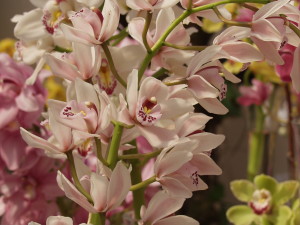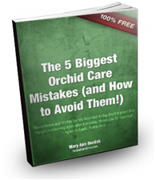 Cymbidium orchids are a particular variety of orchids that naturally thrive in tropical regions like India, China, Japan, Southeast Asian countries and northern Australia. They are one of the most popular orchids in the world because they are hardy, can survive cold temperatures and have beautiful colorful flowers with long blooming periods.
Cymbidium orchids are a particular variety of orchids that naturally thrive in tropical regions like India, China, Japan, Southeast Asian countries and northern Australia. They are one of the most popular orchids in the world because they are hardy, can survive cold temperatures and have beautiful colorful flowers with long blooming periods.
Cymbidiums bloom during winter and ideally each plant has around 15 flowers. They require the basic care of adequate light, water, good potting medium and proper fertilization. But in some cases, you may notice that your cymbidiums have stopped blooming, although the plant may look healthy. Here we will discuss a few solutions on how to get your cymbidium orchids to rebloom.
Light plays a very important role in getting your orchids to bloom. Cymbidium orchids require a lot of light, especially if it is being grown indoors. You must make sure that the plant is receiving at least 12 hours of filtered sunlight or UV rays daily. This is more important during spring, summer and fall months and ensures that you get vibrant blooms in winter.
If your cymbidium has stopped blooming, see if you have changed the position of your plant, if it is getting a lot of shade or if your indoor lighting system needs to be upgraded. In case you have indoor plants, try moving them outdoors in the patio as full sun with partial shade will lead to more flower spikes per bulb.
At the same time, too much light can also cause harm, as bright full sun for long periods can burn the leaves and strong artificial light can suppress blooming. During fall, when the days get shorter, it sends a signal to the plant that fall and winter are here soon and it’s time to bloom.
If you have forgotten to reduce the duration of exposure to light in indoor gardens during late fall, it fails to send the signal to the orchid that it is time to start blooming. Also try adjusting the nighttime temperature by bringing it down by around 10 degrees in the evening. This is another trigger that winter months are almost here which is the natural blooming time for cymbidium orchids.
Another thing that you must check is the color of your leaves. If the leaves are bright green or too dark, this means they are not getting enough light for blooming. The ideal color for blooming is green with a slight yellow tinge, almost like a green apple.
There are also some other questions that you must ask yourself as a cymbidium grower if you want your plants to rebloom. For example, are you overwatering or overfertilizing your orchids? When this happens, the roots of the plant start to rot, which not only effects the overall health of the plant, but also stops the blooming cycle. Check if you have made any changes in your watering schedule or if you are using an increased amount of fertilizer. Moderate and regular watering and using the right amount of fertilizer is essential in triggering your cymbidium orchids to bloom.
In summer, you must water your orchids two to three times a week, but during winter once a week is enough. If you are overwatering, the plants may shed their buds. Use a humidifier or spray water over your orchids to replicate their natural conditions. You can also analyze the salt content of your water to see if there has been an increase in levels lately. If there is salt build up in tap water, then the plant will show leaf-tip die-back, where the tips of the leaves become black and die. This eventually hinders the blooming process too.
It is important to be knowledgeable about the exact contents of your fertilizer. Generally a 10-10-10 fertilizer is used for cymbidiums, which means there is 10% of nitrogen, phosphate and potassium each. This must be used once a month along with the right amount of water. However, if you are using a bark mix growing medium, it is advisable to use a fertilizer which has a higher nitrogen content for the first few months after new growth initiates, and then gradually use a balanced one.
Lastly, be patient, especially if you have repotted recently. Some cymbidiums won’t bloom for 6 months to a year after repotting as they don’t like their roots being disturbed. By following these tips, you can ensure that your cymbidium orchids will start to bloom again.
Do you have any great tricks or techniques to get your cymbidiums to rebloom? Please share them below by leaving a comment.
For more information about this orchid type, here are 10 essentials for growing cymbidiums.




What Readers Are Saying